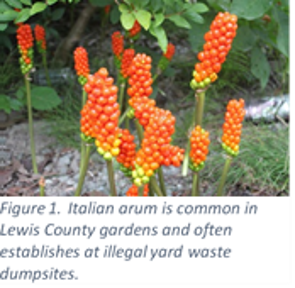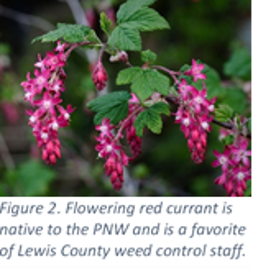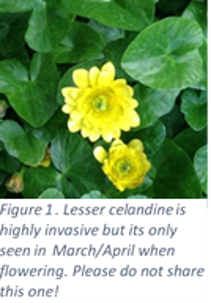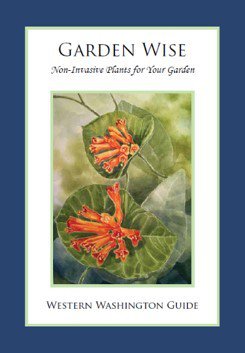Get Outside and Get Garden Wise!
Mother Nature has decided to bestow upon us some glorious sunshine, and if you ask us, timing couldn’t be better because April just happens to be National Garden Month! Now is the time to get out, get dirty, and get garden wise!
Escaping the home garden or landscape setting is one of the primary pathways that “ornamental plants” become “invasive plants” in Washington State. Once established, these “ornamentals” can outcompete native vegetation and, ultimately, change the entire ecosystem from the ground up. Once a habitat lacks native vegetation, there is no longer a food source for native insects, without an insect population, the bird population loses its primary food source, and so on and so forth. Invasive plants also increase fire risk, erosion, and threaten our agricultural economy. Fear not. The rewards of gardening far outweigh the risks when you follow these tips and become garden wise.

Preventing introduction is the most efficient way to reduce the spread and impact of invasive species. Get “in the know” about native plant alternatives. Native plants are often less expensive, perform better in our local growing conditions, are ideal food sources for pollinators, and are just as attractive as the nonnative ornamental plants. If your heart is set on a nonnative specimen, do your research and select one that is does not behave like an invasive plant. Find out what the scientific name of the plant is and cross reference that with the Washington State Noxious Weed List.

When you swap plants with your neighbors and friends, make sure you have ID’d the plant correctly, and that you are swapping only the desired plant (s) and there are no invasive “hitchhikers” in the same pot or soil.

When you are browsing the plant section at your local nursery or garden retailer, be watchful for invasive buzz words. “Easy to grow” and “care-free” indicate that the plant grows well in a variety of habitats and might easily compete with, or out compete other plants. “Showy-abundant flowers” may mean that seed production is high. “Attracts birds” would indicate that the seed could be dispersed and spread by birds. “Disease and pest resistant” can mean that the plant is not affected by our native pests and diseases.
If you think you already have invasive or noxious plant in your garden, please consider removing them and replacing them with more Washington friendly options. The longer an invasive plant remains in the garden, the harder it will be to remove it or control it in the future. Don’t be dissuaded by a persistent invasive or a large infestation, Lewis County Noxious Weed Control has a lot of information to share and would be happy to help you develop an integrated weed management plant to help you get the upper hand on those invasives.

For more great information about how to be garden wise, and to get some non-invasive plant alternatives, check out Washington State Noxious Weed Control Boards publication. https://www.nwcb.wa.gov/gardenwise-western
If you have any questions about plant ID, control measures, or herbicide use, please contact Lewis County Noxious Weed Control at #360-740-1218, #360-740-1215, or email: weeds@lewiscountywa.gov
